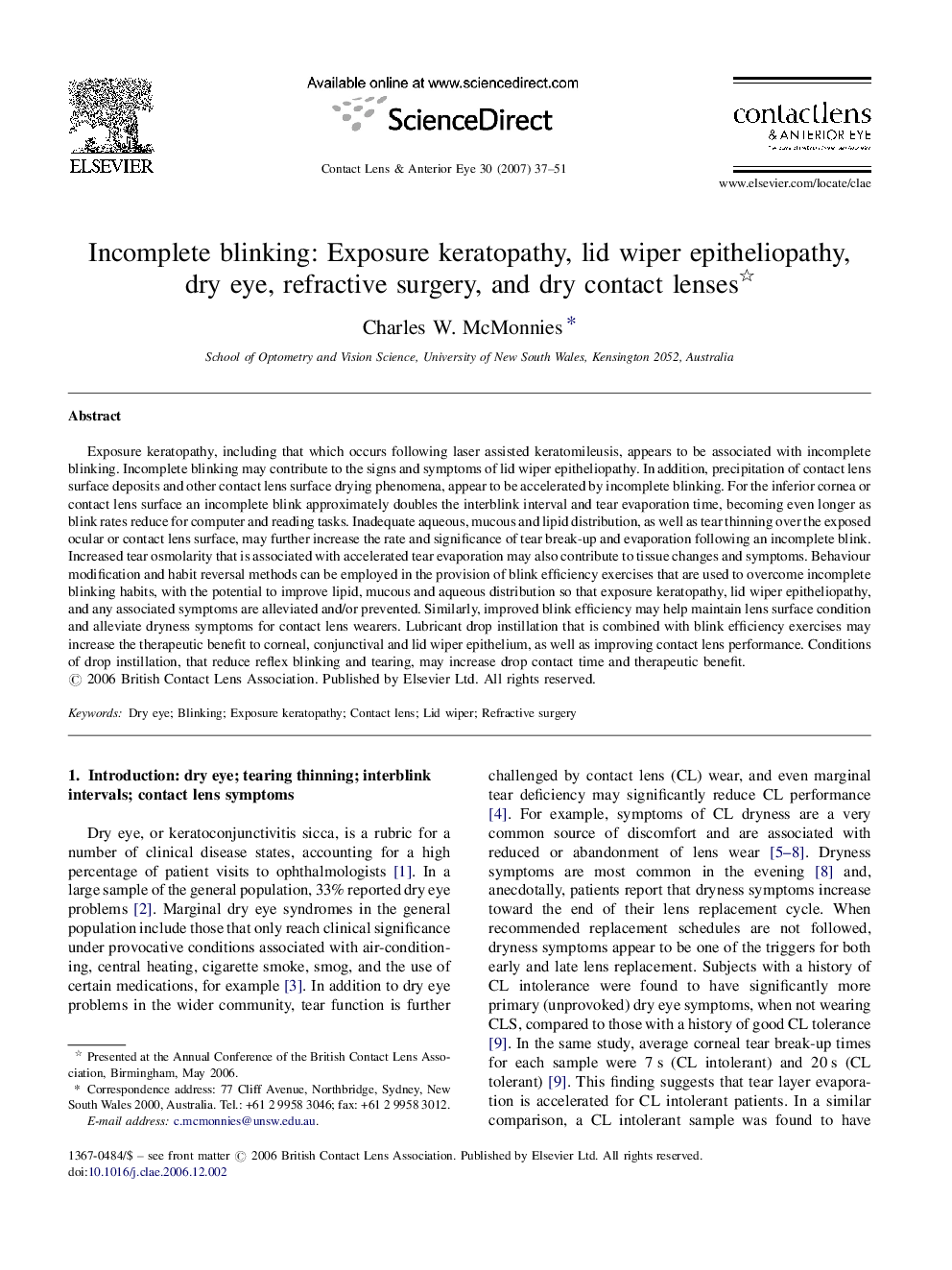| Article ID | Journal | Published Year | Pages | File Type |
|---|---|---|---|---|
| 2697203 | Contact Lens and Anterior Eye | 2007 | 15 Pages |
Exposure keratopathy, including that which occurs following laser assisted keratomileusis, appears to be associated with incomplete blinking. Incomplete blinking may contribute to the signs and symptoms of lid wiper epitheliopathy. In addition, precipitation of contact lens surface deposits and other contact lens surface drying phenomena, appear to be accelerated by incomplete blinking. For the inferior cornea or contact lens surface an incomplete blink approximately doubles the interblink interval and tear evaporation time, becoming even longer as blink rates reduce for computer and reading tasks. Inadequate aqueous, mucous and lipid distribution, as well as tear thinning over the exposed ocular or contact lens surface, may further increase the rate and significance of tear break-up and evaporation following an incomplete blink. Increased tear osmolarity that is associated with accelerated tear evaporation may also contribute to tissue changes and symptoms. Behaviour modification and habit reversal methods can be employed in the provision of blink efficiency exercises that are used to overcome incomplete blinking habits, with the potential to improve lipid, mucous and aqueous distribution so that exposure keratopathy, lid wiper epitheliopathy, and any associated symptoms are alleviated and/or prevented. Similarly, improved blink efficiency may help maintain lens surface condition and alleviate dryness symptoms for contact lens wearers. Lubricant drop instillation that is combined with blink efficiency exercises may increase the therapeutic benefit to corneal, conjunctival and lid wiper epithelium, as well as improving contact lens performance. Conditions of drop instillation, that reduce reflex blinking and tearing, may increase drop contact time and therapeutic benefit.
